Effects of sedatives. Sedatives: Types, Uses, Effects, and Safety Considerations
What are sedatives and how do they work. What are the different types of sedatives available. What are the common uses for sedatives. What are the potential side effects and risks of sedative use. How do sedatives interact with other substances. What are some alternatives to sedatives for relaxation and sleep.
Understanding Sedatives: Definition and Mechanism of Action
Sedatives, also known as central nervous system (CNS) depressants, are a class of drugs that slow brain activity. Their primary function is to induce a calming effect, promote relaxation, and improve sleep quality. But how exactly do these drugs work?
The mechanism of action for sedatives primarily involves increasing the activity of gamma-aminobutyric acid (GABA), a neurotransmitter in the brain. GABA is responsible for inhibiting or reducing brain activity. When sedatives enhance GABA’s effects, they effectively slow down overall brain function, leading to the characteristic sedative effects.

Key Effects of Sedatives on the Brain
- Increased relaxation
- Reduced anxiety
- Drowsiness and sleepiness
- Decreased mental alertness
- Slowed reaction times
It’s important to note that while these effects can be beneficial in certain medical contexts, they also carry potential risks and side effects, especially when misused or taken long-term.
Common Types of Sedatives and Their Uses
Sedatives come in various forms, each with its own specific uses and characteristics. Understanding the different types can help patients and healthcare providers make informed decisions about treatment options.
Barbiturates: The Older Generation of Sedatives
Barbiturates were once widely prescribed but have largely been replaced by safer alternatives due to their high risk of dependence and overdose. However, they still have specific medical uses.
- Phenobarbital (Luminal): Used for seizure disorders
- Amobarbital (Amytal Sodium): Occasionally used for severe insomnia
- Butalbital (Fiorinal): Used in combination medications for migraines
- Pentobarbital (Nembutal): Used for pre-operative sedation
Benzodiazepines: Versatile Anxiety and Sleep Aids
Benzodiazepines are among the most commonly prescribed sedatives today. They have a wide range of uses in treating various conditions.

- Diazepam (Valium): Anxiety, muscle spasms, seizures
- Alprazolam (Xanax): Panic disorders, generalized anxiety disorder
- Clonazepam (Klonopin): Panic disorders, seizures
- Lorazepam (Ativan): Anxiety, insomnia, status epilepticus
Hypnotics: Focused on Sleep Improvement
Also known as Z-drugs, hypnotics are newer sedatives designed specifically to treat sleep disorders with fewer side effects than benzodiazepines.
- Zolpidem (Ambien): Short-term treatment of insomnia
- Eszopiclone (Lunesta): Longer-acting sleep aid
- Zaleplon (Sonata): Short-acting sleep initiator
First-Generation Antihistamines: Over-the-Counter Options
Some antihistamines have sedating properties and are available without a prescription, making them a common choice for occasional sleep issues.
- Diphenhydramine (Benadryl)
- Dimenhydrinate (Dramamine)
- Brompheniramine (Dimetapp)
Medical Applications of Sedatives
Sedatives play a crucial role in various medical scenarios, from managing chronic conditions to facilitating medical procedures. Their ability to induce calmness and reduce anxiety makes them valuable tools in healthcare settings.

Pre-operative and Procedural Sedation
One of the primary uses of sedatives is in preparing patients for surgical procedures. They can range from mild sedation to general anesthesia, depending on the complexity and duration of the procedure. Sedatives help reduce anxiety, induce drowsiness, and in some cases, cause a temporary loss of consciousness.
Anxiety and Panic Disorders
For individuals struggling with anxiety disorders or panic attacks, sedatives can provide much-needed relief. They help calm racing thoughts, reduce physical symptoms of anxiety, and improve overall quality of life when used as part of a comprehensive treatment plan.
Sleep Disorders
Insomnia and other sleep disorders can significantly impact a person’s health and well-being. Sedatives, particularly hypnotics, are often prescribed for short-term use to help establish better sleep patterns.
Seizure Management
Some sedatives, especially certain barbiturates and benzodiazepines, are effective in controlling seizures. They work by suppressing the abnormal electrical activity in the brain that causes seizures.
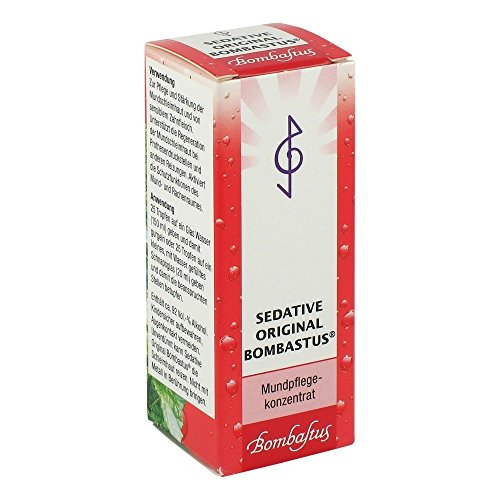
Muscle Relaxation
For conditions involving muscle tension or spasms, sedatives can help relax the muscles and provide relief. This is particularly useful in treating conditions like fibromyalgia or chronic back pain.
Potential Risks and Side Effects of Sedative Use
While sedatives can be highly effective in treating various conditions, they also come with potential risks and side effects that users should be aware of. Understanding these risks is crucial for safe and responsible use.
Short-term Side Effects
Even when used as prescribed, sedatives can cause several immediate side effects:
- Drowsiness and fatigue
- Impaired concentration and memory
- Slowed reaction times
- Confusion or disorientation
- Dizziness or lightheadedness
- Slurred speech
- Low blood pressure
These effects can be particularly dangerous in situations requiring alertness, such as driving or operating machinery.
Long-term Risks
Prolonged use of sedatives, especially when misused or taken without proper medical supervision, can lead to more serious health issues:

- Tolerance and dependence
- Withdrawal symptoms upon discontinuation
- Chronic fatigue and depression
- Cognitive impairment
- Increased risk of falls and accidents, particularly in older adults
- Potential for substance abuse
Is there a risk of addiction with sedative use? Yes, sedatives, particularly benzodiazepines and barbiturates, carry a significant risk of physical and psychological dependence. This risk increases with long-term use or higher doses. It’s crucial for patients to follow their doctor’s instructions carefully and discuss any concerns about addiction potential.
Interactions and Special Considerations
Sedatives can interact with various substances and conditions, potentially altering their effects or causing unexpected reactions. Being aware of these interactions is crucial for safe use.
Alcohol and Sedatives: A Dangerous Combination
Combining alcohol with sedatives can lead to severe CNS depression, potentially resulting in dangerous respiratory suppression or even death. This combination should always be avoided.

Cannabis and Sedative Efficacy
Recent research suggests that regular cannabis use may impact the effectiveness of sedatives. A 2019 study indicated that cannabis users might require higher doses of sedatives to achieve the desired effect. This interaction highlights the importance of disclosing all substance use to healthcare providers.
Pregnancy and Sedative Use
Sedative use during pregnancy requires careful consideration. A 2019 study found that using anti-anxiety medications in early pregnancy could increase the risk of preeclampsia, preterm birth, and low birth weight. Women who are pregnant or planning to become pregnant should discuss the risks and benefits of sedative use with their healthcare provider.
Opioid Interactions
Combining sedatives, particularly benzodiazepines, with opioids can dramatically increase the risk of overdose and respiratory depression. This combination should be avoided unless specifically prescribed and closely monitored by a healthcare professional.

Alternatives to Sedatives for Relaxation and Sleep
While sedatives can be effective, many individuals seek alternatives for managing anxiety, stress, and sleep issues. These alternatives often carry fewer risks and side effects.
Non-Pharmacological Approaches
- Cognitive Behavioral Therapy (CBT): Particularly effective for anxiety and insomnia
- Mindfulness and meditation practices
- Regular exercise and physical activity
- Improved sleep hygiene
- Stress management techniques
- Relaxation exercises, such as deep breathing or progressive muscle relaxation
Natural Supplements
Some people find relief with natural supplements, although it’s important to note that these should still be used with caution and under medical supervision:
- Melatonin: For sleep regulation
- Valerian root: May help with anxiety and sleep
- Chamomile tea: Known for its calming properties
- Lavender: Used in aromatherapy for relaxation
Can natural alternatives be as effective as prescription sedatives? While natural alternatives can be helpful for mild cases of anxiety or insomnia, they may not be sufficient for more severe conditions. The effectiveness can vary greatly between individuals, and some natural remedies can have their own side effects or interactions. It’s always best to consult with a healthcare provider before starting any new treatment regimen, even if it’s natural.

The Future of Sedative Research and Development
As our understanding of the brain and nervous system continues to evolve, so does the field of sedative research. Scientists and pharmaceutical companies are constantly working on developing new drugs that can provide the benefits of sedation with fewer risks and side effects.
Targeted Therapies
One promising area of research involves developing more targeted therapies that can provide sedation without affecting the entire CNS. These drugs could potentially offer more precise control over sedation levels and reduce unwanted side effects.
Novel Mechanisms of Action
Researchers are exploring new ways to induce sedation that don’t rely on enhancing GABA activity. This could lead to sedatives with different side effect profiles and potentially lower risks of dependence.
Personalized Medicine Approaches
Advances in genetic testing and biomarker identification may allow for more personalized prescribing of sedatives. This could help healthcare providers choose the most effective and least risky option for each individual patient.
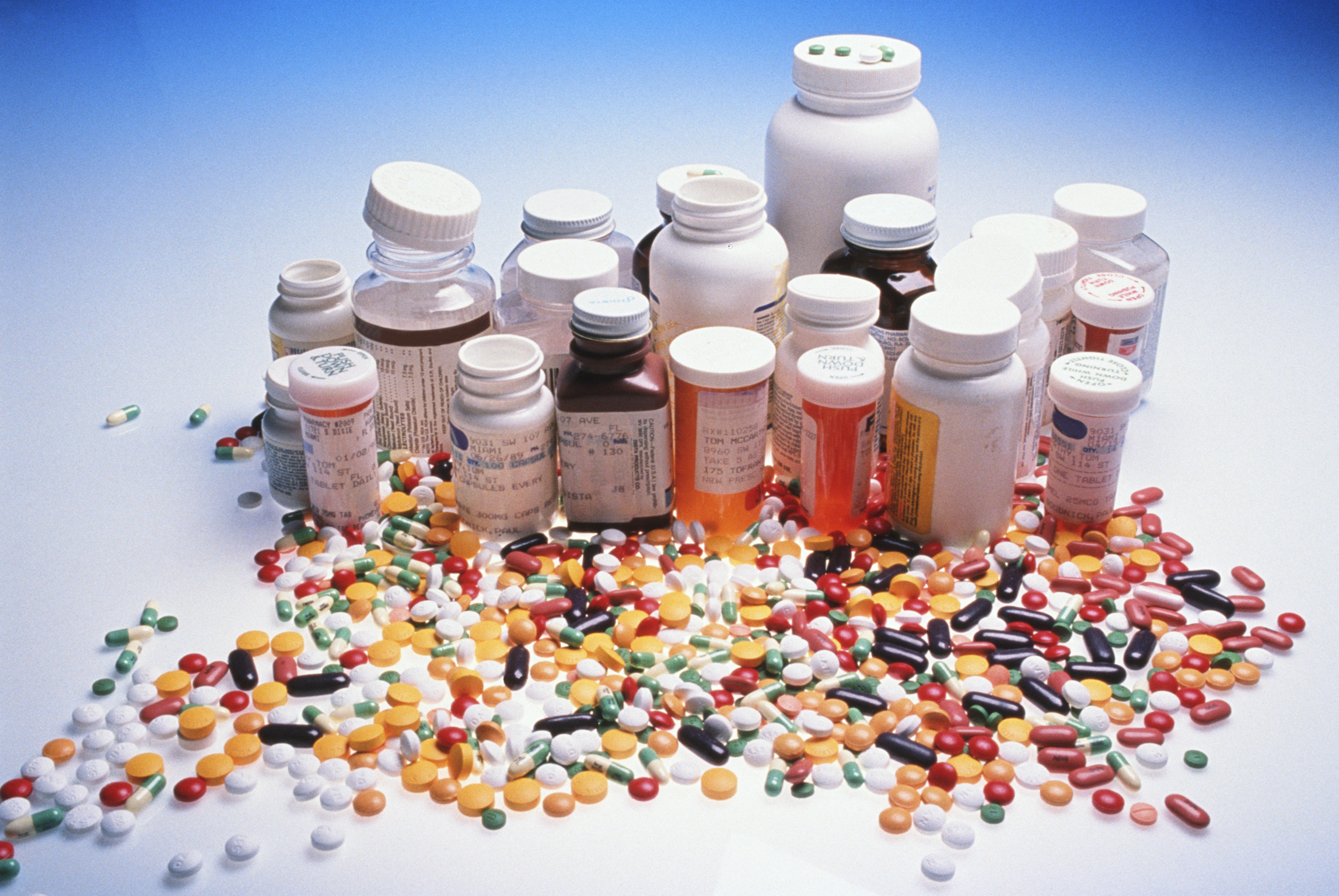
Integration with Digital Health Technologies
The integration of sedative use with digital health technologies, such as sleep tracking apps or wearable devices, could provide more precise dosing and monitoring of sedative effects.
What potential breakthroughs can we expect in sedative research? While it’s difficult to predict specific breakthroughs, some areas of ongoing research include:
- Development of non-addictive anxiolytics and sleep aids
- Exploration of the endocannabinoid system for new sedative targets
- Investigation of rapid-acting sedatives with shorter half-lives for procedural use
- Research into compounds that can reverse sedative effects quickly and safely
These areas of research hold promise for improving the safety and efficacy of sedatives in the future.
Responsible Use and Safe Handling of Sedatives
Given the potential risks associated with sedatives, responsible use and safe handling are crucial. Whether you’re a patient prescribed sedatives or a healthcare provider administering them, following best practices can help minimize risks and ensure optimal therapeutic outcomes.

Guidelines for Patients
- Always follow your doctor’s instructions precisely
- Never increase your dose without consulting your healthcare provider
- Be aware of potential side effects and report any concerns to your doctor
- Avoid alcohol and other CNS depressants while taking sedatives
- Store medications securely, out of reach of children and others
- Never share your prescription medications with others
- Dispose of unused medications properly
Considerations for Healthcare Providers
- Conduct thorough patient assessments before prescribing sedatives
- Consider alternative treatments for patients at high risk of dependence
- Provide clear instructions and education to patients about sedative use
- Monitor patients regularly for signs of tolerance or dependence
- Have a plan for tapering patients off sedatives when appropriate
- Stay informed about the latest research and guidelines on sedative use
How can patients safely discontinue sedative use? Abruptly stopping sedatives, especially after long-term use, can lead to withdrawal symptoms and other complications. Safe discontinuation typically involves a gradual tapering of the dose under medical supervision. The specific tapering schedule will depend on factors such as the type of sedative, duration of use, and individual patient characteristics. It’s crucial for patients to work closely with their healthcare provider throughout this process.

Sedatives play a vital role in modern medicine, offering relief for various conditions and facilitating important medical procedures. However, their use comes with significant responsibilities and potential risks. By understanding the different types of sedatives, their uses, effects, and alternatives, both patients and healthcare providers can make informed decisions about their use. As research continues to advance, we can look forward to safer and more effective sedative options in the future. In the meantime, responsible use, open communication with healthcare providers, and awareness of potential risks remain key to maximizing the benefits of sedatives while minimizing their drawbacks.
Examples, uses, effects, and more
Sedatives, or central nervous system depressants, are a group of drugs that slow brain activity. People use these drugs to help them calm down, feel more relaxed, and get better sleep.
There has been a recent increase in sedative prescriptions. Doctors prescribe sedatives to treat conditions such as:
- anxiety disorders
- sleep disorders
- seizures
- tension
- panic disorders
- alcohol withdrawal syndrome
Sedatives are drugs that people commonly misuse. Misusing sedatives and prolonging their use may lead to dependency and eventual withdrawal symptoms.
This article examines the different types of sedatives available and their possible uses. It also looks at the potential risks associated with using them and some alternative options.
Sedatives have numerous clinical uses. For example, they can induce sedation before surgical procedures, and this can range from mild sedation to general anesthesia.
Doctors also give sedatives and analgesics to individuals to reduce anxiety and provide pain relief before and after procedures.
Obstetric anesthesiologists may also give sedatives to people experiencing distress or restlessness during labor.
Because of their ability to relieve physical stress and anxiety and promote relaxation, doctors may also prescribe sedatives to people with insomnia, anxiety disorders, and muscle spasms.
People with bipolar disorder, post-traumatic stress disorder, and seizures may also benefit from prescription sedatives.
The following is a list of sedatives that people commonly use.
Barbiturates
Barbiturates help relieve anxiety and treat seizures.
Examples of barbiturates include:
- phenobarbital (Luminal)
- amobarbital (Amytal Sodium)
- butalbital (Fiorinal)
- pentobarbital (Nembutal)
Benzodiazepines
Benzodiazepines treat various conditions, including:
- panic attacks
- insomnia
- seizures
- depression
- painful muscle spasms
Examples of benzodiazepines include:
- diazepam (Valium)
- alprazolam (Xanax)
- clonazepam (Klonopin)
- lorazepam (Ativan)
Hypnotics
Also known as nonbenzodiazepine sleep medications or Z-drugs, hypnotics are similar to benzodiazepines but cause fewer side effects. Doctors typically use hypnotics to treat sleep disorders.
Doctors typically use hypnotics to treat sleep disorders.
Examples of hypnotics include:
- zolpidem (Ambien)
- eszopiclone (Lunesta)
- zaleplon (Sonata)
First generation antihistamines
Some antihistamines have sedating properties and are useful in treating mild sleep problems.
Antihistamines are available over the counter and include:
- diphenhydramine (Benadryl)
- dimenhydrinate (Dramamine)
- brompheniramine (Dimetapp)
Others
Other medications slow brain activity and have sedating effects using different mechanisms than those that sedatives utilize. These include:
- opioids
- alcohol
- general anesthetics
- muscle relaxants
- antidepressants
- antipsychotics
Some examples of these prescription medications include:
- oxycodone (OxyContin)
- morphine (Roxanol)
- baclofen (Lioresal)
- gamma-hydroxybutyrate (Xyrem)
- amitriptyline (Elavil)
- olanzapine (Zyprexa)
Sedatives act by increasing the activity of the brain chemical gamma-aminobutyric acid (GABA). This can slow down brain activity in general.
This can slow down brain activity in general.
The inhibition of brain activity causes a person to become more relaxed, drowsy, and calm. Sedatives also allow GABA to have a stronger inhibitory effect on the brain.
Although sedatives have intended clinical effects, they may also cause some unwanted short-term side effects, including:
- difficulties with focus and concentration
- memory loss
- slow reaction times
- impaired depth and distance perception
- an inability to feel pain
- confusion
- impaired judgment
- slurred speech
- low blood pressure
The long-term use of sedatives may cause:
- anxiety
- chronic fatigue
- weight gain
- depression
- thoughts of suicide
Suicide prevention
If you know someone at immediate risk of self-harm, suicide, or hurting another person:
- Ask the tough question: “Are you considering suicide?”
- Listen to the person without judgment.

- Call 911 or the local emergency number, or text TALK to 741741 to communicate with a trained crisis counselor.
- Stay with the person until professional help arrives.
- Try to remove any weapons, medications, or other potentially harmful objects.
If you or someone you know is having thoughts of suicide, a prevention hotline can help. The 988 Suicide and Crisis Lifeline is available 24 hours a day at 988. During a crisis, people who are hard of hearing can use their preferred relay service or dial 711 then 988.
Click here for more links and local resources.
Was this helpful?
People taking sedatives need to be cautious when using cannabis since the drug can dampen the effects of sedatives. One 2019 study suggests that people who use cannabis regularly require higher doses of sedatives.
People taking sedatives who plan to become pregnant should talk with a doctor. Another 2019 study indicates that the use of antianxiety medications during early pregnancy increases the risk of preeclampsia and may also lead to preterm birth and a low birth weight.
Misusing sedatives, which means taking them in amounts or ways other than what the doctor prescribed, can have detrimental effects for a person, including overdose.
Combining sedatives with other depressants can cause a combined and much more significant effect. In 2018, 899 people ages 15–24 years died from overusing prescription drugs, according to the National Institute on Drug Abuse. The majority of these deaths occurred as a result of taking benzodiazepines with opioid medications.
One 2017 study suggests that people taking both opioids and benzodiazepines have a higher risk of opioid overdose and emergency room admissions. A similar study suggests that people taking both types of drugs have a 10-fold risk of dying from an overdose compared with those who only take opioids.
Alcohol is another potent depressant that may interact with and increase the effects of sedatives, causing increased sedation and more significant impairment. The effects could slow down or even stop a person’s breathing and heart function.
Some other potential consequences of misuse include:
- impaired function while engaging in activities such as driving
- unconsciousness
- death
Long-term sedative use can also cause dependence. It is important to note that dependence does not only happen in people who misuse sedatives. It also affects people who take them exactly as the doctor prescribed.
Because their body has become used to the sedative’s effects, a person may also develop a tolerance to the drug or get a reduced effect from it. As a result, they may need higher doses to achieve the same initial effect.
If someone develops a dependence on a drug, they may experience withdrawal if they stop taking it.
People who suddenly stop taking sedatives may experience withdrawal symptoms. These can happen rapidly, be severe, and even be life threatening. Withdrawal symptoms may appear as early as 12–24 hours after the person’s last dose.
Withdrawal symptoms may include:
- irritability
- hallucinations
- difficulty sleeping
- rapid heart rate
- shaky hands and unintended movements
- profuse sweating
- nausea and vomiting
People who worry about becoming dependent on sedatives can try other options to manage their condition, such as:
- Lifestyle changes: Proper nutrition, regular exercise, and good sleep hygiene may help decrease anxiety, improve overall health and well-being, and enhance sleep.

- Cognitive behavioral therapy (CBT): One 2020 study suggests that CBT and yoga are both effective in managing late-life worry in older adults. They were also effective in improving the sleep of shift workers.
- Yoga: Yoga and meditation may promote relaxation, reduce stress and anxiety, and improve sleep. In one study, doing prenatal yoga during pregnancy reduced anxiety and improved sleep.
- Relaxation techniques: Deep breathing, guided imagery, progressive muscle relaxation, and other relaxation techniques may help people cope with anxiety and stress.
- Aromatherapy: A person can use essential oils such as lavender and chamomile to help them sleep and relax.
- Supplements: Several supplements — including valerian root, melatonin, passionflower, and magnesium — may help improve sleep. A 2021 study suggests that taking magnesium may improve sleep duration and quality.
People use sedatives for a variety of clinical purposes. However, these drugs are prone to misuse and may cause severe side effects.
However, these drugs are prone to misuse and may cause severe side effects.
People taking sedatives must communicate with a doctor to prevent adverse side effects, including dependence and withdrawal. People who are planning to take sedatives should first ask a doctor for possible alternatives.
Examples, uses, effects, and more
Sedatives, or central nervous system depressants, are a group of drugs that slow brain activity. People use these drugs to help them calm down, feel more relaxed, and get better sleep.
There has been a recent increase in sedative prescriptions. Doctors prescribe sedatives to treat conditions such as:
- anxiety disorders
- sleep disorders
- seizures
- tension
- panic disorders
- alcohol withdrawal syndrome
Sedatives are drugs that people commonly misuse. Misusing sedatives and prolonging their use may lead to dependency and eventual withdrawal symptoms.
This article examines the different types of sedatives available and their possible uses. It also looks at the potential risks associated with using them and some alternative options.
It also looks at the potential risks associated with using them and some alternative options.
Sedatives have numerous clinical uses. For example, they can induce sedation before surgical procedures, and this can range from mild sedation to general anesthesia.
Doctors also give sedatives and analgesics to individuals to reduce anxiety and provide pain relief before and after procedures.
Obstetric anesthesiologists may also give sedatives to people experiencing distress or restlessness during labor.
Because of their ability to relieve physical stress and anxiety and promote relaxation, doctors may also prescribe sedatives to people with insomnia, anxiety disorders, and muscle spasms.
People with bipolar disorder, post-traumatic stress disorder, and seizures may also benefit from prescription sedatives.
The following is a list of sedatives that people commonly use.
Barbiturates
Barbiturates help relieve anxiety and treat seizures.
Examples of barbiturates include:
- phenobarbital (Luminal)
- amobarbital (Amytal Sodium)
- butalbital (Fiorinal)
- pentobarbital (Nembutal)
Benzodiazepines
Benzodiazepines treat various conditions, including:
- panic attacks
- insomnia
- seizures
- depression
- painful muscle spasms
Examples of benzodiazepines include:
- diazepam (Valium)
- alprazolam (Xanax)
- clonazepam (Klonopin)
- lorazepam (Ativan)
Hypnotics
Also known as nonbenzodiazepine sleep medications or Z-drugs, hypnotics are similar to benzodiazepines but cause fewer side effects. Doctors typically use hypnotics to treat sleep disorders.
Doctors typically use hypnotics to treat sleep disorders.
Examples of hypnotics include:
- zolpidem (Ambien)
- eszopiclone (Lunesta)
- zaleplon (Sonata)
First generation antihistamines
Some antihistamines have sedating properties and are useful in treating mild sleep problems.
Antihistamines are available over the counter and include:
- diphenhydramine (Benadryl)
- dimenhydrinate (Dramamine)
- brompheniramine (Dimetapp)
Others
Other medications slow brain activity and have sedating effects using different mechanisms than those that sedatives utilize. These include:
- opioids
- alcohol
- general anesthetics
- muscle relaxants
- antidepressants
- antipsychotics
Some examples of these prescription medications include:
- oxycodone (OxyContin)
- morphine (Roxanol)
- baclofen (Lioresal)
- gamma-hydroxybutyrate (Xyrem)
- amitriptyline (Elavil)
- olanzapine (Zyprexa)
Sedatives act by increasing the activity of the brain chemical gamma-aminobutyric acid (GABA). This can slow down brain activity in general.
This can slow down brain activity in general.
The inhibition of brain activity causes a person to become more relaxed, drowsy, and calm. Sedatives also allow GABA to have a stronger inhibitory effect on the brain.
Although sedatives have intended clinical effects, they may also cause some unwanted short-term side effects, including:
- difficulties with focus and concentration
- memory loss
- slow reaction times
- impaired depth and distance perception
- an inability to feel pain
- confusion
- impaired judgment
- slurred speech
- low blood pressure
The long-term use of sedatives may cause:
- anxiety
- chronic fatigue
- weight gain
- depression
- thoughts of suicide
Suicide prevention
If you know someone at immediate risk of self-harm, suicide, or hurting another person:
- Ask the tough question: “Are you considering suicide?”
- Listen to the person without judgment.

- Call 911 or the local emergency number, or text TALK to 741741 to communicate with a trained crisis counselor.
- Stay with the person until professional help arrives.
- Try to remove any weapons, medications, or other potentially harmful objects.
If you or someone you know is having thoughts of suicide, a prevention hotline can help. The 988 Suicide and Crisis Lifeline is available 24 hours a day at 988. During a crisis, people who are hard of hearing can use their preferred relay service or dial 711 then 988.
Click here for more links and local resources.
Was this helpful?
People taking sedatives need to be cautious when using cannabis since the drug can dampen the effects of sedatives. One 2019 study suggests that people who use cannabis regularly require higher doses of sedatives.
People taking sedatives who plan to become pregnant should talk with a doctor. Another 2019 study indicates that the use of antianxiety medications during early pregnancy increases the risk of preeclampsia and may also lead to preterm birth and a low birth weight.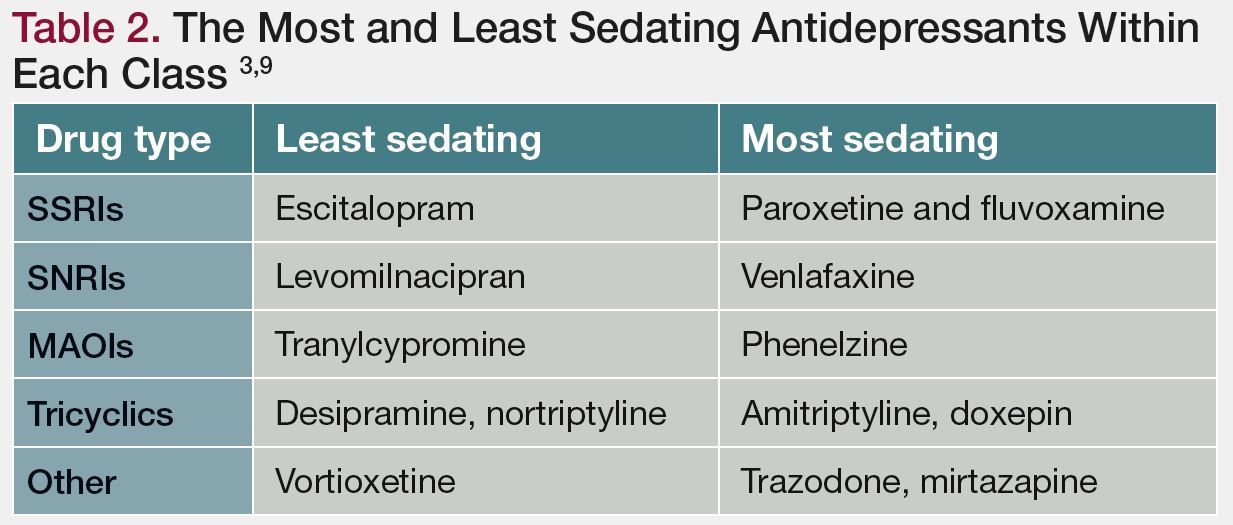
Misusing sedatives, which means taking them in amounts or ways other than what the doctor prescribed, can have detrimental effects for a person, including overdose.
Combining sedatives with other depressants can cause a combined and much more significant effect. In 2018, 899 people ages 15–24 years died from overusing prescription drugs, according to the National Institute on Drug Abuse. The majority of these deaths occurred as a result of taking benzodiazepines with opioid medications.
One 2017 study suggests that people taking both opioids and benzodiazepines have a higher risk of opioid overdose and emergency room admissions. A similar study suggests that people taking both types of drugs have a 10-fold risk of dying from an overdose compared with those who only take opioids.
Alcohol is another potent depressant that may interact with and increase the effects of sedatives, causing increased sedation and more significant impairment. The effects could slow down or even stop a person’s breathing and heart function.
Some other potential consequences of misuse include:
- impaired function while engaging in activities such as driving
- unconsciousness
- death
Long-term sedative use can also cause dependence. It is important to note that dependence does not only happen in people who misuse sedatives. It also affects people who take them exactly as the doctor prescribed.
Because their body has become used to the sedative’s effects, a person may also develop a tolerance to the drug or get a reduced effect from it. As a result, they may need higher doses to achieve the same initial effect.
If someone develops a dependence on a drug, they may experience withdrawal if they stop taking it.
People who suddenly stop taking sedatives may experience withdrawal symptoms. These can happen rapidly, be severe, and even be life threatening. Withdrawal symptoms may appear as early as 12–24 hours after the person’s last dose.
Withdrawal symptoms may include:
- irritability
- hallucinations
- difficulty sleeping
- rapid heart rate
- shaky hands and unintended movements
- profuse sweating
- nausea and vomiting
People who worry about becoming dependent on sedatives can try other options to manage their condition, such as:
- Lifestyle changes: Proper nutrition, regular exercise, and good sleep hygiene may help decrease anxiety, improve overall health and well-being, and enhance sleep.

- Cognitive behavioral therapy (CBT): One 2020 study suggests that CBT and yoga are both effective in managing late-life worry in older adults. They were also effective in improving the sleep of shift workers.
- Yoga: Yoga and meditation may promote relaxation, reduce stress and anxiety, and improve sleep. In one study, doing prenatal yoga during pregnancy reduced anxiety and improved sleep.
- Relaxation techniques: Deep breathing, guided imagery, progressive muscle relaxation, and other relaxation techniques may help people cope with anxiety and stress.
- Aromatherapy: A person can use essential oils such as lavender and chamomile to help them sleep and relax.
- Supplements: Several supplements — including valerian root, melatonin, passionflower, and magnesium — may help improve sleep. A 2021 study suggests that taking magnesium may improve sleep duration and quality.
People use sedatives for a variety of clinical purposes. However, these drugs are prone to misuse and may cause severe side effects.
However, these drugs are prone to misuse and may cause severe side effects.
People taking sedatives must communicate with a doctor to prevent adverse side effects, including dependence and withdrawal. People who are planning to take sedatives should first ask a doctor for possible alternatives.
Sedatives – ACADEMPHARM
Sedatives are drugs that reduce emotional stress and have a calming effect on the central nervous system. They do not have a pronounced hypnotic effect, but at the same time they facilitate the onset of falling asleep and improve the quality of sleep. Available in the form of drops, tablets, capsules, tinctures, as well as herbal preparations for brewing.
Pharmaceutical sedatives are divided into three groups:
- Vegetable – their basis is vegetable raw materials: hawthorn, mint , lemon balm , valerian , peppermint, motherwort. Such preparations may be single-component or multi-component.
 They are well tolerated and have a mild cumulative effect, so they need to be taken for a long time.
They are well tolerated and have a mild cumulative effect, so they need to be taken for a long time. - Synthetic – have a pronounced effect on the nervous system, have a number of contraindications and side effects. These include:
- bromine-based agents – bromides. Anticonvulsants, which are used to treat neurotic disorders.
- drugs containing phenobarbital – have an effective sedative effect. The disadvantage of such drugs is that with prolonged use they are addictive and withdrawal syndrome. The withdrawal syndrome is understood as the reaction of the body to the discontinuation of the drug, in which the condition worsens and the initial symptoms of the disease are activated.
- small tranquilizers – prescription sedatives and anti-anxiety drugs .
- Combined – in such medicines, plant components are combined with synthetic ones. They take courses several times a year. Released without a prescription.

According to the World Health Organization, 80% of patients prefer to take herbal sedatives. This is because they are non-addictive, less toxic, and generally well tolerated.
Sedatives: indications for use
The state of stress and constant nervous tension is fraught with such health problems as arterial hypertension, impaired blood glucose levels, pathologies of the gastrointestinal tract. Sleep disturbance, mood swings, constant nervousness and irritability increase the risk of stroke, heart attack and other diseases. Therefore, it is necessary to take measures to reduce nervous excitement and restore a normal psychological state.
Calming drugs are used in the following cases:
- increased anxiety ;
- chronic stress;
- irritability;
- neuroses and neurosis-like conditions;
- climax condition;
- inability to relax;
- hyperexcitability;
- reduced performance;
- neurasthenia;
- psycho-emotional stress;
- insomnia and other sleep disorders.

Sedatives are used in some intestinal diseases, as they have a mild antispasmodic effect. As part of complex therapy, they are prescribed for arrhythmias, angina pectoris, arterial hypertension. Sedatives are also used for emotional experiences before exams or other important events, to calm before certain medical procedures, with dental phobia – fear of dental treatment.
In case of depression, phobias or severe mental disorders, it is better to visit the appropriate specialist immediately, without waiting for the condition to worsen. He will prescribe a course of psychotherapy in combination with effective drugs.
Contraindications
Like any drug, sedatives have a number of contraindications. They must not be used under the following conditions:
- allergic reactions or intolerance to the components of the drug;
- low blood pressure;
- kidney and liver pathologies;
- children’s age;
- bradycardia;
- brain damage;
- lactose deficiency;
- cholelithiasis;
Alcohol-based preparations are contraindicated in patients with alcoholism, epilepsy, traumatic brain injury, and during pregnancy and lactation. With some contraindications, the doctor may prescribe a sedative at a lower dosage if he considers that the benefits of the medication outweigh the possible harm from side effects.
With some contraindications, the doctor may prescribe a sedative at a lower dosage if he considers that the benefits of the medication outweigh the possible harm from side effects.
Long-term use of sedative drugs may cause side effects such as dizziness, lethargy, nausea, and abdominal cramps. In this case, the advisability of further therapy should be discussed with the doctor.
Which sedative is best?
This question cannot be answered unambiguously. The choice of medication depends on the symptoms and severity of the patient’s condition. With stress and mild forms of psycho-emotional disorders, it is more reasonable to stop at preparations that contain extracts of medicinal herbs. The effect of sedatives of plant origin appears gently, gradually. Therefore, they should be taken for at least two weeks. Such drugs do not cause dependence, side effects are extremely rare, and there is no withdrawal syndrome upon discontinuation. The mild effect of herbs has a calming effect, normalizes the emotional background, improves the quality of sleep. For a complex effect, products containing several components are suitable. For example, RATIUM contains three types of raw materials – valerian , lemon balm and mint .
For a complex effect, products containing several components are suitable. For example, RATIUM contains three types of raw materials – valerian , lemon balm and mint .
If long-term use of sedative drugs does not give a positive effect, you need to see a doctor to adjust the treatment.
Although herbal sedatives are sold over-the-counter in pharmacies, we recommend that you consult your doctor before using them. He will indicate the duration of administration and dosage, which will be effective in your case. If it is not possible to consult a doctor, be sure to read the instructions before use.
Sedatives: pharmacological group
Description
Sedatives (from Latin sedatio – sedation) are drugs that have a general calming effect on the central nervous system. The sedative (calming) effect is manifested in a decrease in the reaction to various external stimuli and a slight decrease in daily activity.
The drugs of this group regulate the functions of the central nervous system, enhancing the processes of inhibition or lowering the processes of excitation. As a rule, they facilitate the onset and deepen natural sleep, enhance the effect of hypnotics, analgesics and other drugs that depress the central nervous system.
Sedatives include bromine preparations – sodium bromide and potassium bromide, camphor bromide, as well as preparations made from medicinal plants (valerian, motherwort, passionflower, peony, etc.).
Bromides began to be used in medicine a very long time ago, back in the 19th century. The effect of bromine salts on higher nervous activity was studied in detail by I.P. Pavlov and his students with experimentally induced neurosis in dogs, as well as in healthy animals.
According to I.P. Pavlov, the main effect of bromides is associated with the ability to concentrate and enhance the processes of inhibition in the cerebral cortex, restoring the disturbed balance between the processes of inhibition and excitation, especially with increased excitability of the central nervous system. The action of bromides depends on the type of higher nervous activity and the functional state of the nervous system. Under experimental conditions, it has been shown that in order to obtain the same therapeutic effect, animals with a weak type of nervous activity require lower doses of bromides than animals with a strong type of nervous activity. In addition, as a rule, the less the severity of functional disorders in the cerebral cortex, the smaller doses are required to correct these disorders.
The action of bromides depends on the type of higher nervous activity and the functional state of the nervous system. Under experimental conditions, it has been shown that in order to obtain the same therapeutic effect, animals with a weak type of nervous activity require lower doses of bromides than animals with a strong type of nervous activity. In addition, as a rule, the less the severity of functional disorders in the cerebral cortex, the smaller doses are required to correct these disorders.
The dependence of the therapeutic doses of bromides on the type of nervous activity has also been confirmed in the clinic. In this regard, it is necessary to take into account the type and condition of the nervous system when selecting an individual dose.
Bromine preparations are used in various neurotic disorders as sedatives. Bromides also have anticonvulsant activity, but they are currently very rarely used as antiepileptic drugs.
It should be taken into account that bromine salts are characterized by slow excretion from the body (plasma concentration decreases by half after about 12 days). Bromides accumulate in the body and can cause chronic poisoning (bromism), manifested by general lethargy, apathy, memory impairment, and the appearance of a characteristic skin rash (acne bromica) , irritation and inflammation of mucous membranes, etc.
Bromides accumulate in the body and can cause chronic poisoning (bromism), manifested by general lethargy, apathy, memory impairment, and the appearance of a characteristic skin rash (acne bromica) , irritation and inflammation of mucous membranes, etc.
In medicine, preparations obtained from medicinal raw materials – rhizomes and roots of valerian, flowering tops of motherwort herb, shoots with leaves of passionflower grass, etc. have long been widely used. of plant origin due to their constituent essential oils, alkaloids, etc. ), as well as some alkaloids (valerine and hatinine), tannins, sugars, etc. Valerian has a moderate sedative effect, enhances the effect of hypnotics, and also has antispasmodic properties.
The main biologically active substances that make up motherwort preparations are flavonol glycosides, essential oils, low-toxic alkaloids, saponins, tannins.
There are combined preparations (Validol, Valocordin, etc.), which contain various sedative substances.
Despite the availability of modern tranquilizers, sedatives continue to be widely used in medical practice. The main indications for the appointment of sedatives are increased nervous excitability, irritability, vegetative-vascular disorders, sleep disorders, neuroses (at the beginning of treatment), incl. cardioneurosis, neurosis-like states. Compared with anxiolytics and hypnotics, especially benzodiazepine derivatives, sedatives (especially of plant origin) have a less pronounced sedative effect, however, they are characterized by good tolerance and the absence of serious side effects (do not cause muscle relaxation, ataxia, drowsiness, and addiction, mental and physical dependence). All this allows them to be widely used in everyday outpatient practice.
Previously, magnesium sulfate was used as a sedative, which, depending on the method of administration, has a different pharmacological effect on the body. When ingested, magnesium sulfate is poorly absorbed from the gastrointestinal tract and acts as a laxative and choleretic agent. When administered parenterally, magnesium sulfate reduces the excitability of neurons and has a depressant effect on the central nervous system (it manifests itself as a sedative, anticonvulsant, in large doses – an anesthetic effect), and also has a myotropic antispasmodic effect. The effect on the cardiovascular system is manifested by hypotensive (predominantly elevated blood pressure decreases) and antiarrhythmic (with paroxysms of ventricular tachycardia of the “pirouette” type) effects.
When administered parenterally, magnesium sulfate reduces the excitability of neurons and has a depressant effect on the central nervous system (it manifests itself as a sedative, anticonvulsant, in large doses – an anesthetic effect), and also has a myotropic antispasmodic effect. The effect on the cardiovascular system is manifested by hypotensive (predominantly elevated blood pressure decreases) and antiarrhythmic (with paroxysms of ventricular tachycardia of the “pirouette” type) effects.
Numerous experimental and clinical studies conducted since the mid-80s of the XX century have proven the important role of magnesium ions in the regulation of the functions of the nervous, cardiovascular and other body systems. It has been shown that a lack of magnesium in the body leads to increased excitability of cells, primarily muscle and nerve cells, to metabolic disorders (energy metabolism, etc.), incl. in the central nervous system, to disruption of neuromuscular transmission, etc.

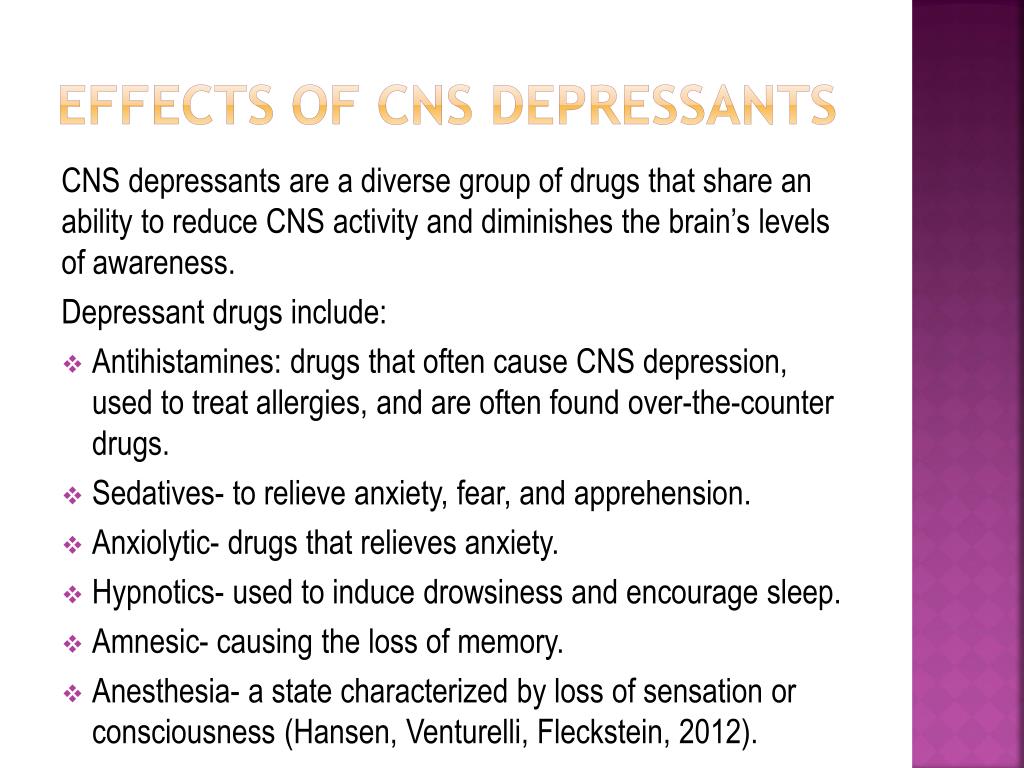

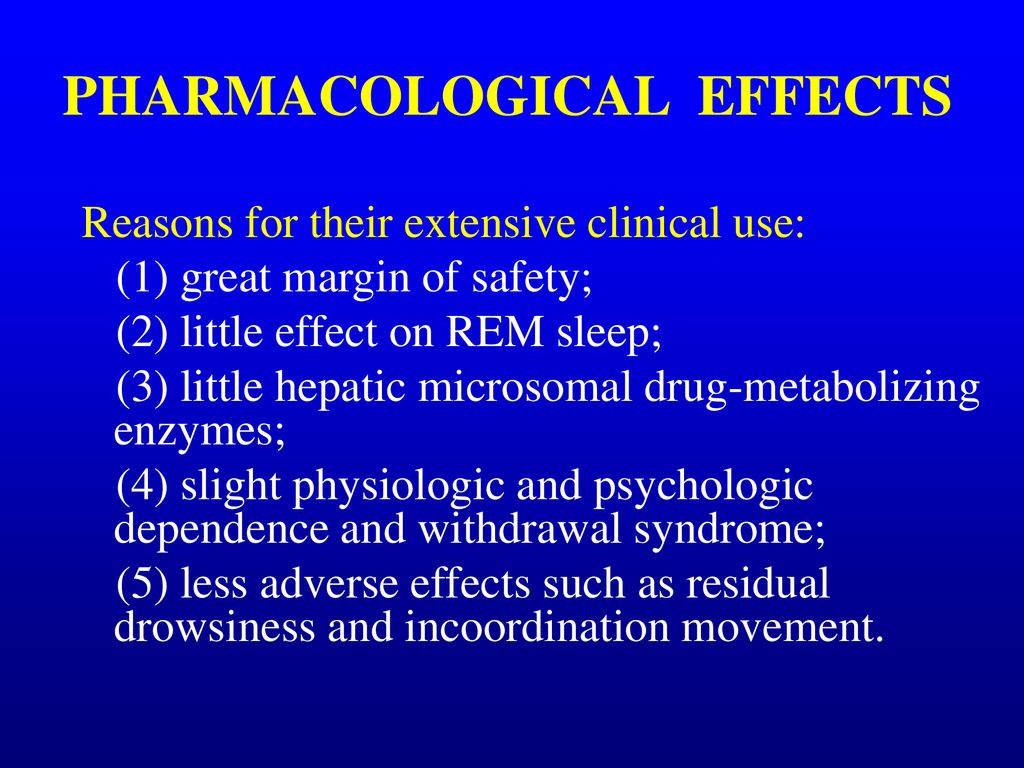

 They are well tolerated and have a mild cumulative effect, so they need to be taken for a long time.
They are well tolerated and have a mild cumulative effect, so they need to be taken for a long time.
